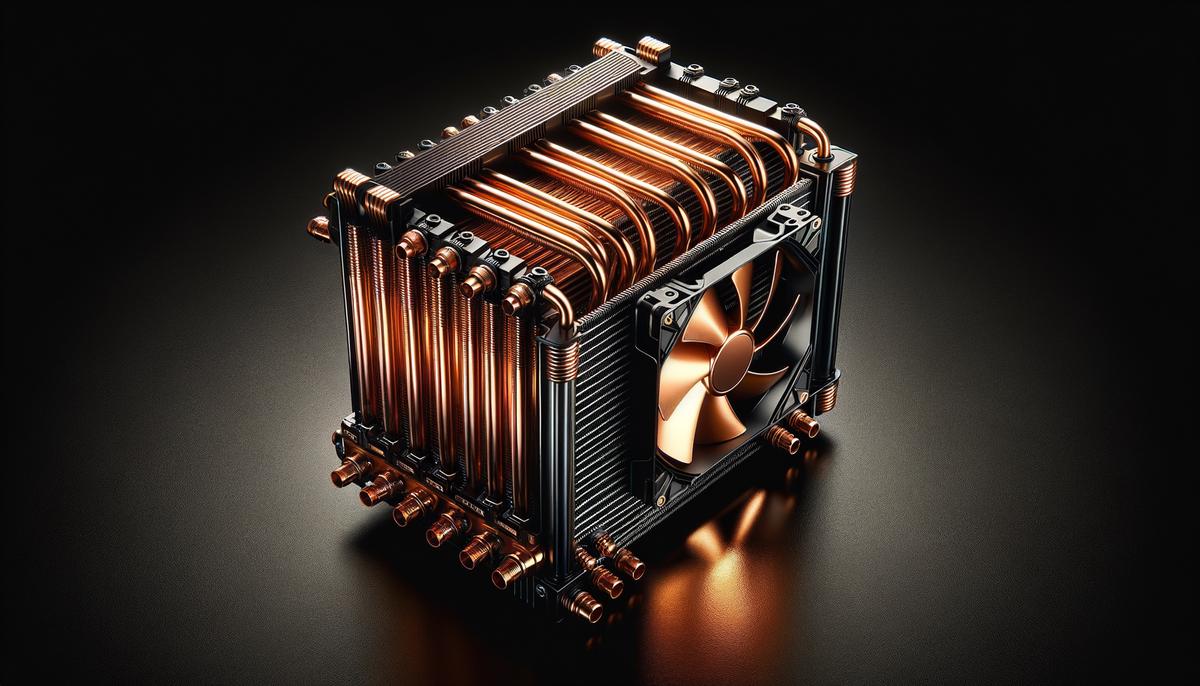Choosing the right wheels for your vehicle involves weighing various factors, from performance and efficiency to aesthetics and cost. This decision can significantly impact your driving experience, fuel economy, and the overall look of your car. As we examine the differences between alloy and steel wheels, we’ll shed light on how each option can influence these aspects, guiding you toward making an informed choice that aligns with your priorities and driving conditions.
Contents
Material Composition and Manufacturing
Alloy wheels mix aluminum or magnesium with other metals, offering a lighter option that boosts a car’s speed and fuel efficiency. They’re made through either casting or forging processes. Casting involves pouring molten metal into a mold, an economical method that allows for intricate designs. Forging, on the other hand, compresses solid metal under extreme pressure to create a wheel, leading to a denser, stronger product.
Steel wheels combine iron with carbon, creating a tougher but heavier wheel. They’re typically pressed from sheets of steel and welded together, a process that lends itself to mass production and lower costs. This results in wheels that are more durable and resistant to damage from rough roads.
The weight difference between the two types means alloy wheels can reduce the overall weight of a vehicle, thus improving acceleration and braking. However, their flexibility means they can be more prone to bending under extreme impacts.
On aesthetics, alloys take the cake. With their casting process allowing for more elaborate designs, they offer a wider variety of styles compared to the utilitarian look of steel wheels. Plus, they don’t need wheel covers or paint as steel wheels do, maintaining their look without extra embellishments.
However, the strength and affordability of steel make it the material of choice for off-road vehicles or cars in areas with poor road conditions. Its ability to withstand harsh impacts without bending makes replacing them less frequent, saving money in the long run.
Alloys lead in performance and style, suited for those prioritizing speed and appearance. Steel stands strong in durability and cost, appealing to drivers needing ruggedness and economic value.
Each wheel type’s construction impacts its performance on the road. The alloy’s lightness leads to better handling, crucial for high-speed driving. Steel’s heft, while impacting fuel efficiency negatively, offers stability in challenging driving conditions.
By understanding these distinctions, drivers can make informed decisions based on their needs, whether they prioritize the swift performance and eye-catching design of alloys or the resilience and economic benefits of steel wheels.
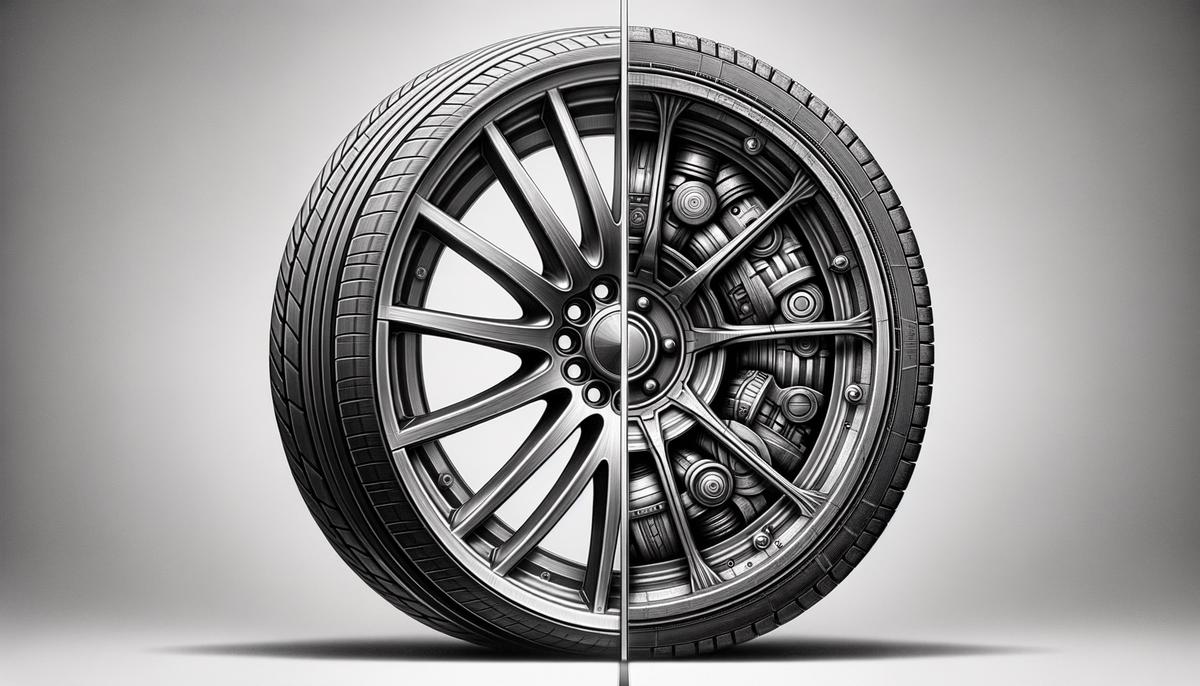
Performance and Efficiency
Alloy wheels enhance a car’s driving dynamics in several key areas beyond just acceleration and handling. Due to their lighter nature, these wheels offer a more nimble ride, allowing for quicker steering response and making it easier for drivers to navigate bends and turns. This responsiveness stems from the reduction in unsprung weight – the mass of the suspension and wheels not supported by the car’s springs. When this weight is reduced, the suspension can follow the terrain more closely, improving tire contact with the road which in turn enhances grip and stability during maneuvering.
Moving beyond the advantage in acceleration and maneuverability, alloy wheels also have a hand in improving fuel efficiency. The logic here is straightforward: lighter wheels mean the car has less mass to move, resulting in a lower demand for power and, consequently, less fuel consumption. While the savings might not be monumental, over time and distance, they certainly accrue, contributing to overall improved efficiency of the vehicle.
Moreover, less vehicle weight also means less strain on various components, including brakes and suspension systems. In high-speed situations or emergencies requiring sudden stops, alloy wheels can decrease stopping distances due to their lighter mass requiring less brake force to slow down or halt the car. This not merely boosts performance but also enhances safety by potentially mitigating collision impacts.
Regarding seasonal changes, alloy wheels perform admirably in hot weather due to their superior heat conduction properties compared to steel wheels. This efficient heat dissipation helps in keeping both the tires and braking system cooler, reducing the risk of tire blowouts and providing consistent braking performance even in higher temperatures.
When considering long-term wear, although steel wheels are known for their durability, the reduced stress on the vehicle’s suspension components because of alloy wheels’ lighter weight could argue in favor of longer vehicle life-span. This prolonged durability of vehicle parts indirectly tied to the wheel choice underlines the importance of considering wheel material not just from a performance standpoint but also from a wear-and-tear perspective.
Ultimately, the choice between alloy and steel wheels depends on a driver’s preferences regarding performance, efficiency, and maintenance. Each type offers distinct benefits that cater to different driving conditions and needs. While alloy wheels present clear advantages in enhancing a vehicle’s dynamic behavior and efficiency, these benefits should be weighed against individual expectations and driving habits to make an informed decision that aptly fits one’s lifestyle and driving conditions.
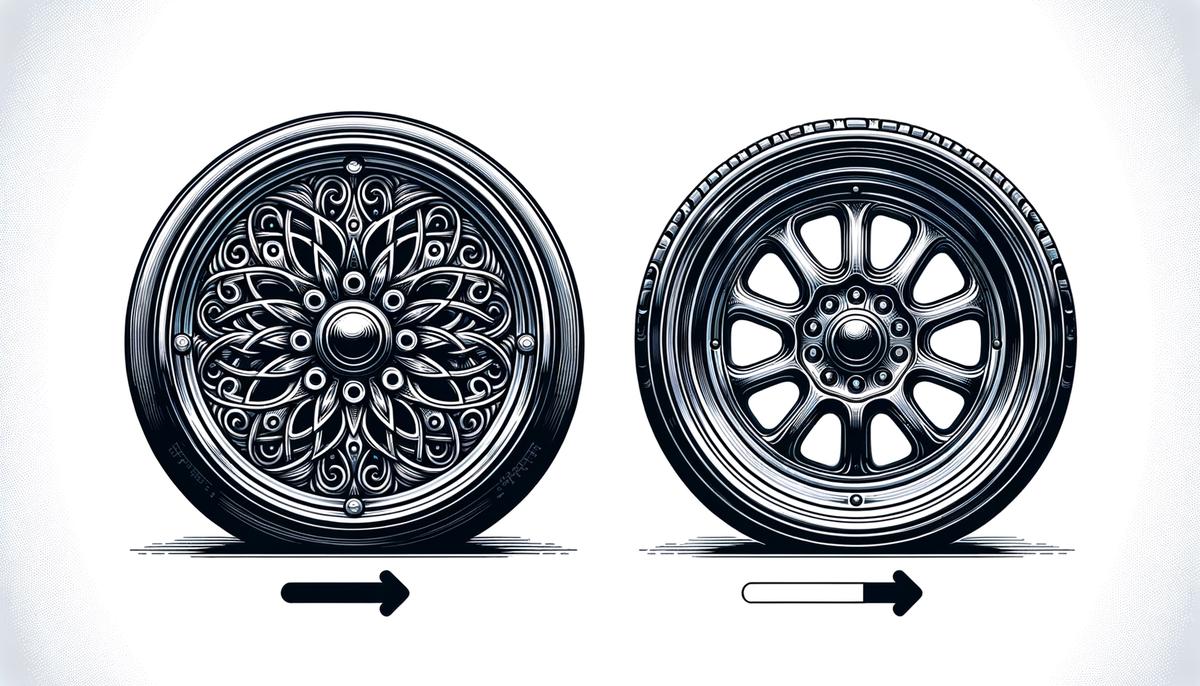
Durability and Maintenance
When it comes to dealing with damage and enduring the rough and tumble of the road, steel wheels have a slight edge. They’re like the sturdy pair of boots that can take a beating yet keep on walking. Bumps, potholes, or kerb impacts, typical city driving hazards don’t faze them much. They may get scratches or paint chips, but for the most part, they’ll still roll smoothly, keeping you on track without much fuss.
On the flip side, maintaining steel wheels isn’t a picnic if they start to show signs of rust, which can be their Achilles’ heel. Think of rust like the wheel’s worst enemy, creeping in if the protective layer is compromised. Once rust sets in, it doesn’t just hang around; it spreads. Dealing with it means rolling up your sleeves for some scrubbing and painting to keep the wheels looking decent and functioning well.
Switching gears to alloy wheels, they’re the sleek sneakers that get heads turning but might scuff easier than robust boots. They can show wear simply from daily use, whether it’s minor dents from rough roads or scratches from curbside parking misjudgments. Their appeal lies in their resistance to rust, attributed to their composition. Alloys have a secret weapon against corrosion; the materials blended into them give them a resilience steel wheels might envy in damp conditions or salty roads in winter.
Maintenance for alloy wheels is more about keeping them looking sharp. Regular cleaning to remove road grime and brake dust keeps them shining. For cosmetic concerns like scratches or dents, professional services can buff these blemishes out, making them sparkle like new, although these fixes might dig deeper into your pocket compared to steel wheel upkeep.
Deciding on wheel types boils down to weighing durability against maintenance ease. Steel wheels might not need much attention until they encounter rust, at which point they’ll demand a bit more elbow grease to maintain. Alloys, while needing care to keep their cool, primarily ask for preventative upkeep to avoid corrosion and a little extra care to fix cosmetic damage.
Both have their own paths of care – steel with its battle against rust and alloys with their need for cosmetic upkeep. Thus, the ride goes on, with each type of wheel rolling to the rhythm of its own maintenance beat.
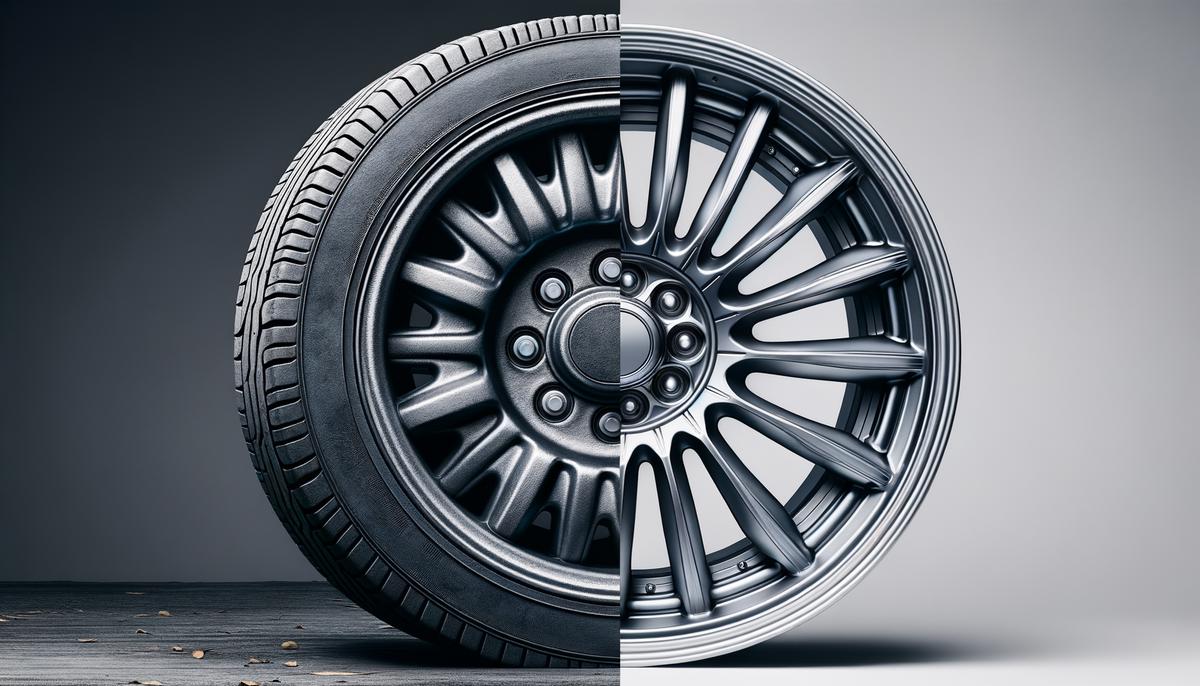
Aesthetics and Customization
When it comes to the visual allure and customization possibilities of wheels, alloy, and steel sit on opposite ends of the spectrum. Alloy wheels are like the chameleons of the automotive world; they can fit into any role you desire, whether sleek and refined or bold and attention-grabbing. On the other hand, steel wheels are the reliable old friends who don’t dress to impress but always show up.
Alloy wheels shine in their ability to offer drivers a bespoke experience. Due to the versatility of aluminum or magnesium alloy, manufacturers can mold these wheels into a dizzying array of shapes and styles. From the intricate spoke designs that add a touch of elegance, to the bolder, chunkier styles that set a more aggressive tone for the vehicle, alloys provide an opportunity for self-expression that steel wheels cannot match. Furthermore, alloy wheels come finished in an assortment of colors and treatments—think beyond silver to sleek black, vibrant gold, or even dual-tone effects. This diversity allows car enthusiasts to punctuate their vehicle’s aesthetic according to their personal taste.
Steel wheels, contrastingly, have a more uniform look—typically painted in standard silver or black. Their straightforward, utilitarian design leans towards function over fashion. However, it’s worth noting that this simplicity has its own sort of understated beauty. Plus, for those who admire a classic or retro look, steel wheels can evoke nostalgic sentiments.
Custom covers or “hubcaps” further differentiate the two. Specifically for steel wheels, they can somewhat bridge the aesthetic gap. These covers mimic the look of alloy wheels to an extent and can refresh the appearance of steel wheels without a hefty investment.
While it might seem that alloy wheels take the crown for style and customization, there’s an important consideration for those living in harsh climates. Steel wheels take the lead in environments with heavy snow and salt usage during winter. Here, the simplicity and lower cost of steel wheels become advantageous. Their standard finish and robust nature mean that any damage from winter driving conditions is less of a visual concern compared to alloys, which may require repair or refinishing after bouts of poor weather.
Alloys bring a world of aesthetic delights and personalization freedom to the table, suited for those who see their vehicle as an extension of their style. Steel wheels stand firm in utility and simplicity, perfect for the pragmatists who prioritize function or face winter’s wrath annually. Each type of wheel caters to different desires in vehicle customization, making the choice between them a personal journey rather than a straightforward decision.
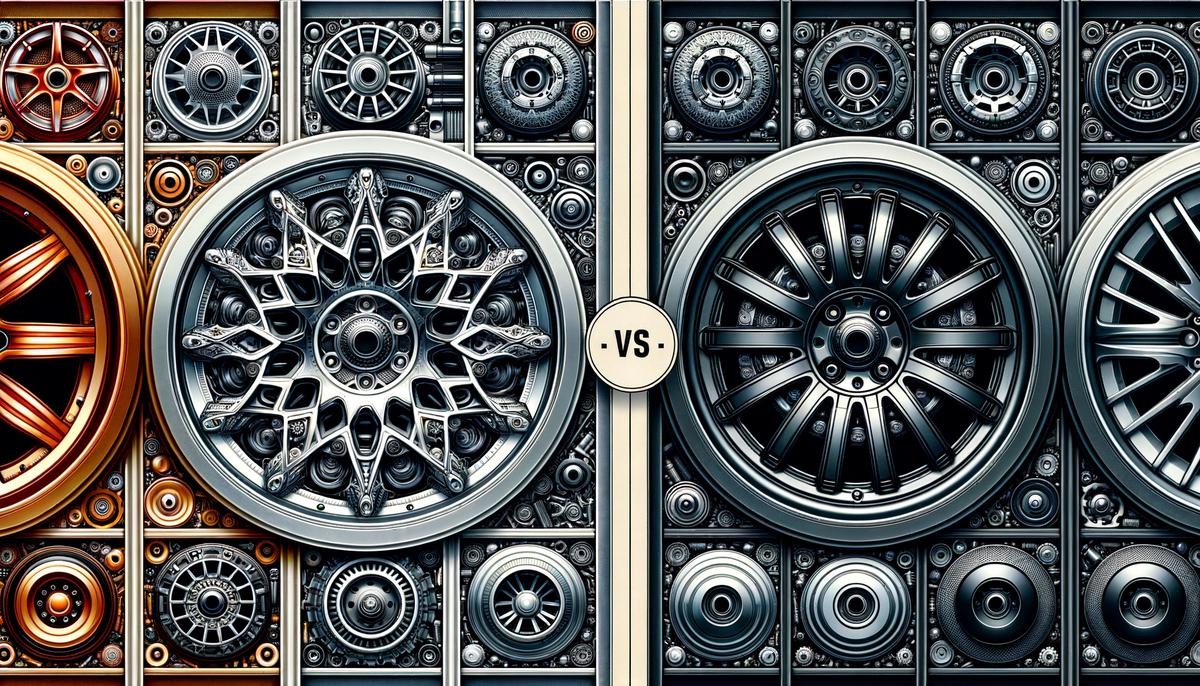
Cost Comparison
When you look at initial sticker prices, there’s no fighting the fact that alloy wheels jump out as the spendier choice. This is because their sophisticated looks and benefits are highly sought after, bumping up their market value. However, cracking open the conversation about long-term value and resale value paints a different picture on the canvas.
Alloy wheels boast of not just jazzing up your ride with their sleek design but also tipping the scales in favor of better fuel efficiency. The lighter touch of alloy on the tarmac translates to some savings at the pump over time. Now, doesn’t that sound like music to a budget-wise driver’s ears?
Additionally, in the arena of maintenance, while it’s true that alloys might call for a more watchful eye to avoid cosmetic damage, they generally resist the plague of rust far better than their steel counterparts. Time, which eats away at the beauty and function of steel with rust, seems to glide off the surface of alloys. This resistance ensures alloys look better for longer, reducing the need for replacements due to rust-induced damage.
Speaking of gifts that keep on giving, consider the fuel savings and sidestepping the frequent replacements or rust repairs. Then, project those benefits over the lifespan of your vehicle. What do you get? A cocktail of savings spiced up with enduring appeal. This concoction brews an appealing resale value for your vehicle.
When you pull up to the buyer’s driveway, a car with shining alloy wheels is bound to wink more convincingly than one rolling on steel. Alloy wheels don’t just sing songs of your travels; they play a symphony of careful ownership and style. This perception can translate into tangible, better dollars in your pocket when it’s time to pass the baton to a new owner.
Choice chow for thought–while your wallet might feel a pinch buying alloy wheels upfront, the journey matters as much as the start. Costs will vary like shades of paint on a canvas, but steering your choices toward long-term satisfaction could see alloy wheels spinning into the more cost-effective choice down those winding roads of ownership.

In conclusion, the journey of selecting between alloy and steel wheels is guided by a blend of practicality and personal preference. Whether you value the enhanced performance and sleek design of alloy wheels or the durability and cost-effectiveness of steel wheels, your choice will shape your driving experience. Remember, the right wheels do more than just carry your car; they reflect your style and meet your needs on the road, making every journey uniquely yours.



